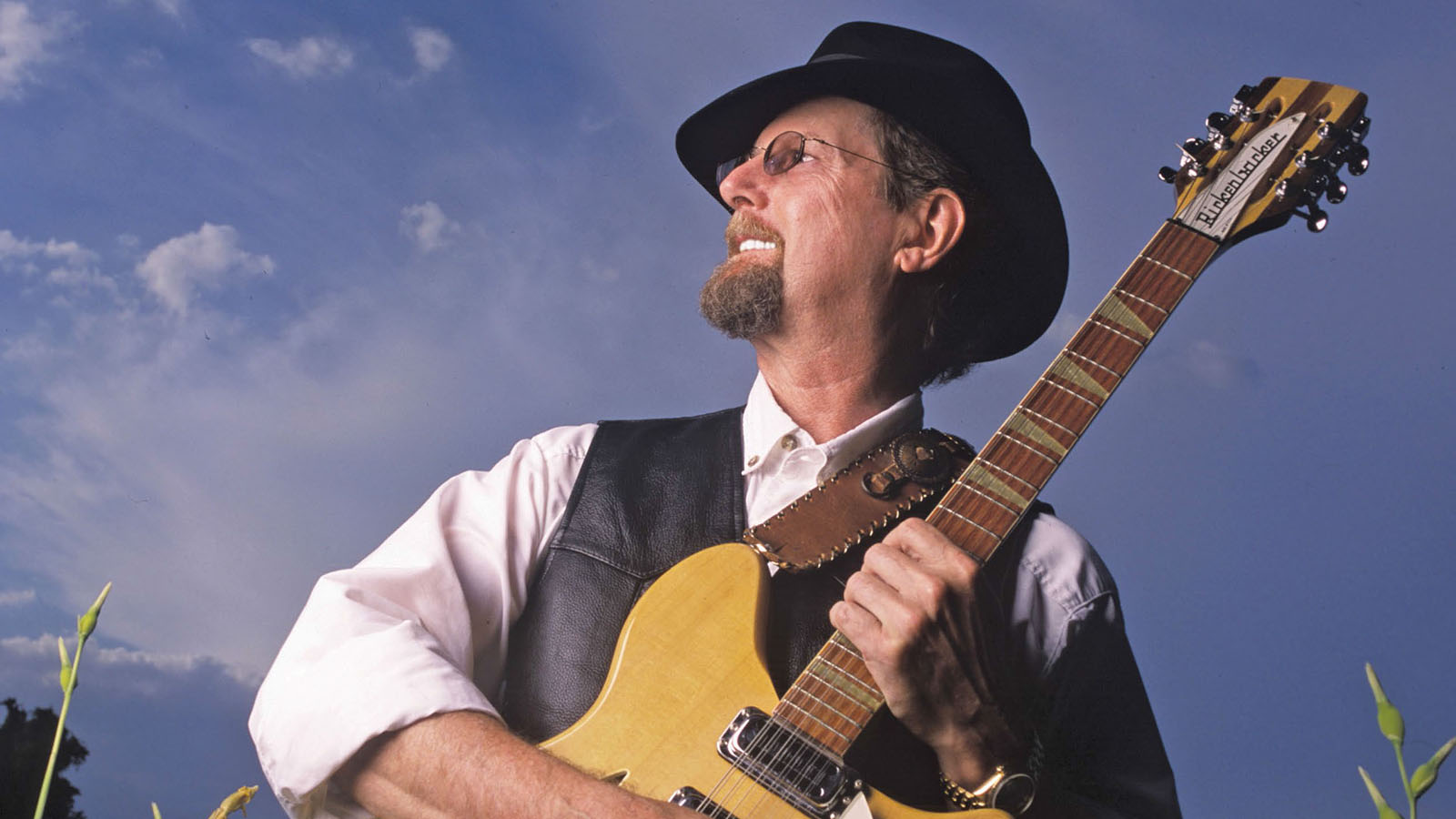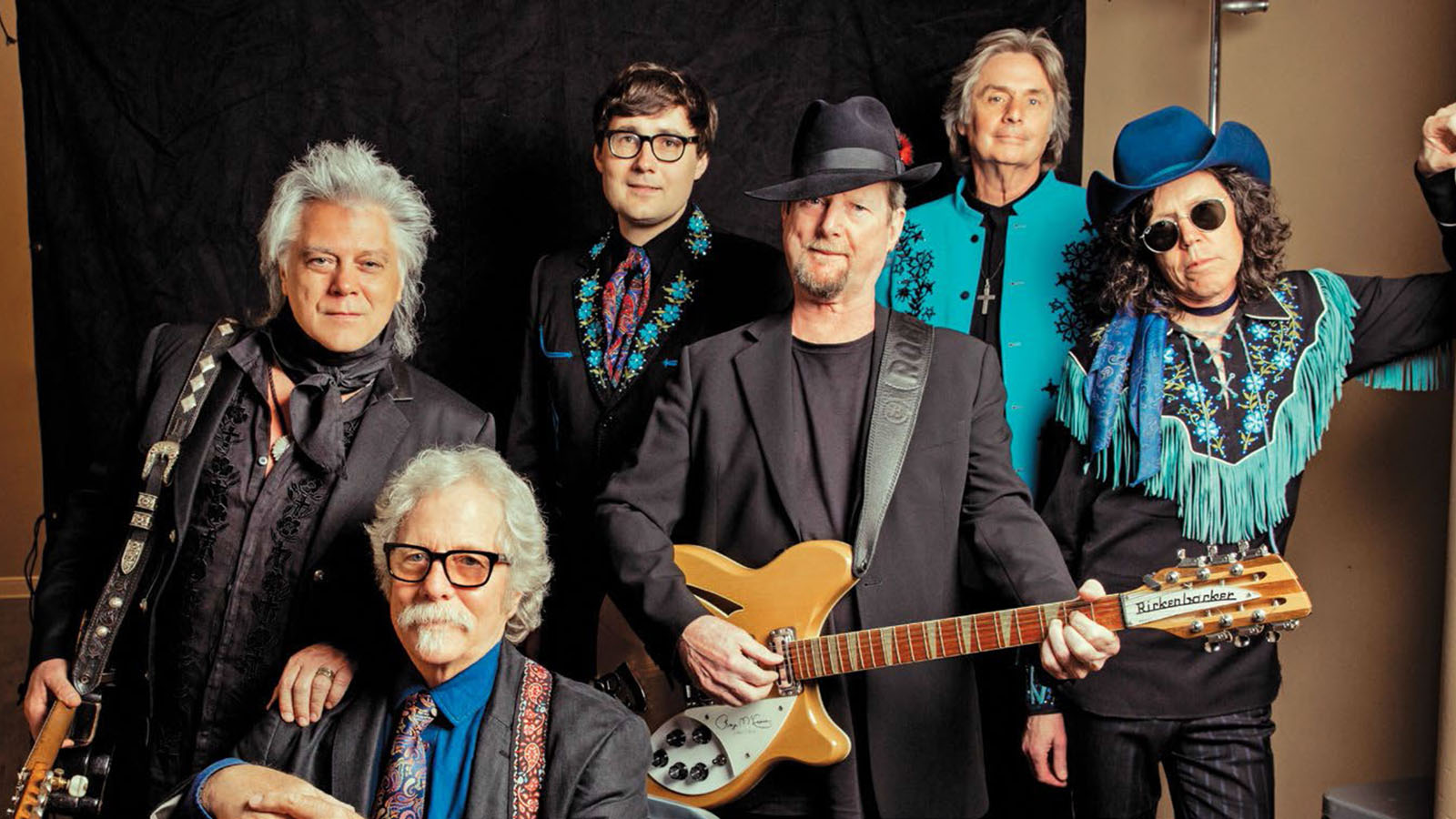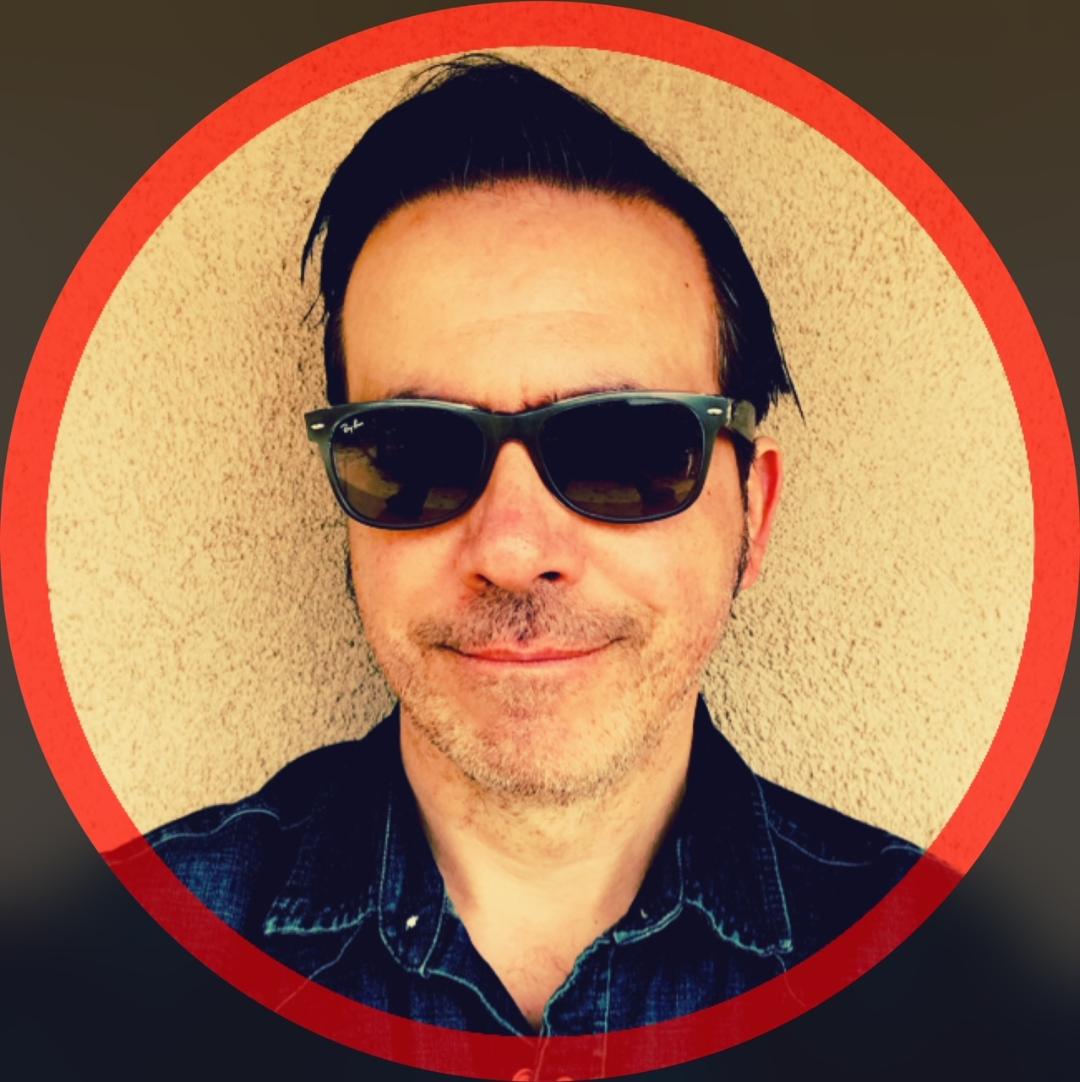Roger McGuinn Talks Byrds, Rickenbackers, New Album and Touring with Chris Hillman
He co-founded Sixties pop-rock titans the Byrds, inspired a Beatles song and helped invent country rock. But what Guitar World readers really want to know is…

He’s a co-founder of Sixties pop-rock titans the Byrds, and his distinctive 12-string Rickenbacker jangle is one of the most influential and imitated guitar sounds of the past 53 years. Oh, his playing also inspired a Beatles song and he helped invent country rock. But what Guitar World readers really want to know is…
I always thought it was brilliant that you inserted a bit of J.S. Bach’s “Jesu, Joy of Man’s Desiring” into the guitar solo for The Byrds’ “She Don’t Care About Time” in 1965. what inspired that? —Harry Falstaff
I was always a fan of Pete Seeger, and he put out an album called Goofing-Off Suite [1955] where he played “Jesu, Joy of Man’s Desiring” on the banjo. So I learned to play that on the banjo too. And then when I got to the studio to record “She Don’t Care About Time,” I remembered it and just threw it in there. George Harrison was in the studio that day; I think George and Paul had come to watch us record. George liked that a lot [laughs].
You and former Byrd Chris Hillman are teaming up with Marty Stuart for a U.S. tour that pays tribute to the Byrds’ Sweetheart of the Rodeo album, which turns 50 this fall. What about the tour are you looking forward to most? —Jules Santorelli
First of all, it’s great to get back together with Chris; I haven’t done that in many years. But we’re playing with Marty Stuart and his band, the Fabulous Superlatives, and they’re excellent. And, of course, Marty’s got Clarence White’s Telecaster, and he knows all of Clarence’s licks. So it’s really like getting back together with Clarence and playing those songs.
What can you tell me about your brand-new studio album, Sweet Memories? —John MacDonald
It’s a lot of fun to listen to! We’ve been driving cross-country, and it’s really good driving music. I rerecorded “Mr. Tambourine Man,” “Turn! Turn! Turn!” and “So You Want to Be a Rock ‘n’ Roll Star” plus a new version of “Chestnut Mare” called “Chestnut Mare Christmas” with Marty Stuart on guitar. I actually played all the instruments on the album except for that one song. Then we added seven other songs we’d written, plus another one that’s really funny called “Friday,” which has an interesting back story.
Get The Pick Newsletter
All the latest guitar news, interviews, lessons, reviews, deals and more, direct to your inbox!
There’s this girl named Rebecca Black. Around 2011, her mother bought her a recording and video session from this company in California. They had two songs pre-written, and she could take her pick, so she picked a song about Fridays — you know, everybody’s looking forward to the weekend and so on. So she recorded this video and it went viral; she got more than 100 million views on You-Tube. This guy Nate Herman from Second City in Chicago — he’s an actor and musician — he decided to make a spoof of the video, and I ran across it a few years ago. In the spoof video, he’s in a record shop talking about a song Bob Dylan had written called “Friday,” but the tape had been erased and lost and so on. But they found a video of it by the Byrds in a thrift shop in Venice, California, that was labeled “head cleaner.” You can find the Nate Herman video on YouTube if you search for the Byrds’ “Friday.” Anyway, I thought it was so funny, so I recorded it.
In my opinion, the late Clarence White of the Byrds was one of the greatest guitarists of all time. What was he like as a person? —Damien Linotte
He was a delight to play with. He was a brilliant guitar player, probably the best one I’ve ever worked with. I compare him to Jimi Hendrix or Eric Clapton. He was excellent, and he also was a very good friend. The night before he was killed by a drunk driver [July 15, 1973], he came to my birthday party. He said we should get together and work together some more. It doesn’t have to be the Byrds or anything, but it would be great to work together. I said sure, and I was ready to do that. Then he got hit by a car.
What was it about Clarence White’s playing style that you appreciated the most? —Zakk Kyle Jr.
Clarence had a way of syncopating things, and he was unpredictable. He never played the same licks twice, really. He’d just go into it and improvise every time. He was almost like a jazz guy.
Besides the Sweetheart of the Rodeo album, what other songs will you be playing on the Sweetheart of the Rodeo 50th Anniversary tour? —Midge Lessons
We’re gonna do Byrds songs that led up to the recording of Sweetheart of the Rodeo — songs that we did back on Turn! Turn Turn! like “Satisfied Mind,” and then onto “Girl with No Name” from Younger Than Yesterday and “Old John Robertson” from The Notorious Byrd Brothers, plus “Mr. Spaceman.” Pretty much anything the Byrds did that was country-ish before we went to Nashville to record Sweetheart of the Rodeo.
It’s well known that seeing George Harrison in the Beatles’ first film, A Hard Day’s Night, inspired you to get a 12-string Rickenbacker. Two years later, your 12-string playing style was the main influence behind Harrison’s “If I Needed Someone.” Did you guys eventually become friends? —Fred Freelancer
We were friends, and we did hang out together from time to time. Interestingly, the first thing he ever learned to play on the guitar was the first thing I’d learned to play on guitar. It was the lead break from Gene Vincent’s Woman Love, the flipside of “Be-Bop-A-Lula.” He was in Liverpool and I was in Chicago, and we both learned how to play the same song.
I’ve always been a fan of your [1991] Back from Rio album, which featured appearances by Elvis Costello, Tom Petty and the Heartbreakers and more. I know how and why you met Tom, but how’d you get hooked up with Elvis? —Stephen Longo
I met Elvis Costello at Storyville New Orleans probably around 30 years ago — before Jimmy Buffet bought it and turned it into Margaritaville. It was a famous old club. Elvis showed up. He was at my gig and came backstage after the show. He asked me if he could play my Rickenbacker, and I said sure. He started to play it and went, “Wow, this is hard to play!” So we got to be friends, and we bump into each other at airports and everything. I did a gig in Boston and he showed up — stuff like that. Anyway, I asked him if he’d like to be involved with Back from Rio, so he wrote “You Bowed Down.”

What’s up with your signature seven-string Martin guitar? What’s the extra string — and why? —Kristi Branford
It’s got a high G string. What I did was try to get the best part of a 12-string on a six-string. I was on the Concord from Paris to New York, and they promised they’d treat our guitars really well. But I got to New York, took my guitar out and it was all smashed. I thought, man, it’s not a good idea to carry a six-string and a 12-string acoustic; I’d like to get the best of both on one guitar. So I went to Dick Boak at Martin Guitar. We had lunch together and drew out the plans on a napkin. He made a seven-string prototype in the custom shop. But before he could send it to me, a couple of guitarists came and played it and they said they wanted one too. So they made a whole run of them. I think they made about 260 HD7’s, which are around $5,000. The European market said they wanted one that wasn’t quite so expensive, so they made the D7 and took out the mother-of-pearl abalone. It’s pretty much the same guitar. Basically, it’s got the best part of a 12-string — you can play leads up and down the neck like George Harrison used to do.
What’s your favorite amp to use with your Rickenbacker? —Gib Dumoulin
I don’t really use an amp with the Rickenbacker much, but when I do, I use a Roland JC-120. I have a Roland Cube 80 that I carry with me, but I prefer to go through the board, which is what I did at the Columbia Records studio.
Which Byrds lineup was your favorite? —Phil Wall
Well, I’ll divide it into recording and performing. The first band was better in the studio, but then, by the time it evolved to where we had Clarence White on guitar, we were better on the road than in the studio. It was a really hot performing band. There were good things about both versions — or of the many versions of the Byrds. The first one was great. We had hits with “Mr. Tambourine Man” and “Turn! Turn! Turn!” right off the bat, but then we eventually got Clarence, who I’ve compared to Jimi Hendrix, so that was a great band.
Sweetheart of the Rodeo wasn’t exactly a hit when it came out in 1968. What did you think of it at the time, and are you surprised by the legendary status it’s achieved all these years later? —Andy Winters
Well, we loved it. We wouldn’t have recorded it if we didn’t love it [laughs]. But obviously we weren’t doing it for commercial reasons; we were doing it just out of the love of the music. I was quite surprised that it didn’t go over better than it did when it came out because we loved it so much, so we thought everybody would pick up on that. But there was a misunderstanding. The country people thought we were interlopers and the rock-and-roll people thought we’d sold out to the country crowd. It took about 40 years for it to catch on, but gradually it became more and more revered. It’s probably the most-respected Byrds album of all time, which is weird.
What’s the real reason you recorded over Gram Parsons’ lead vocals on “The Christian Life” on Sweetheart of the Rodeo? —Brian Cancemi
It was because [singer-songwriter-producer] Lee Hazlewood had a contract with Gram at the time. They resolved that, but I had already overdubbed a few vocals at that point. It wasn’t a personal thing.
What’s your favorite Byrds album from the Clarence White era? —Hank Brennan
I guess it'd be Untitled [1970].
What happened to your original Byrds-era 12-string Rickenbacker 360? I heard it was stolen at some point. —Gary Owen
Yeah, it got stolen, and it resurfaced maybe 20 years ago for a lot of money — and then it kind of disappeared. I haven’t seen it lately.

Damian is Editor-in-Chief of Guitar World magazine. In past lives, he was GW’s managing editor and online managing editor. He's written liner notes for major-label releases, including Stevie Ray Vaughan's 'The Complete Epic Recordings Collection' (Sony Legacy) and has interviewed everyone from Yngwie Malmsteen to Kevin Bacon (with a few memorable Eric Clapton chats thrown into the mix). Damian, a former member of Brooklyn's The Gas House Gorillas, was the sole guitarist in Mister Neutron, a trio that toured the U.S. and released three albums. He now plays in two NYC-area bands.
“I was in a frenzy about it being trapped and burnt up. I knew I'd never be able to replace it”: After being pulled from the wreckage of a car crash, John Sykes ran back to his burning vehicle to save his beloved '76 Les Paul
“His songs are timeless, you can’t tell if they were written in the 1400s or now”: Michael Hurley, guitarist and singer/songwriter known as the ‘Godfather of freak folk,’ dies at 83









